No daily feedings or discard? That’s right! This Easy Gluten Free Sourdough Starter will have you in the sourdough game in no time.
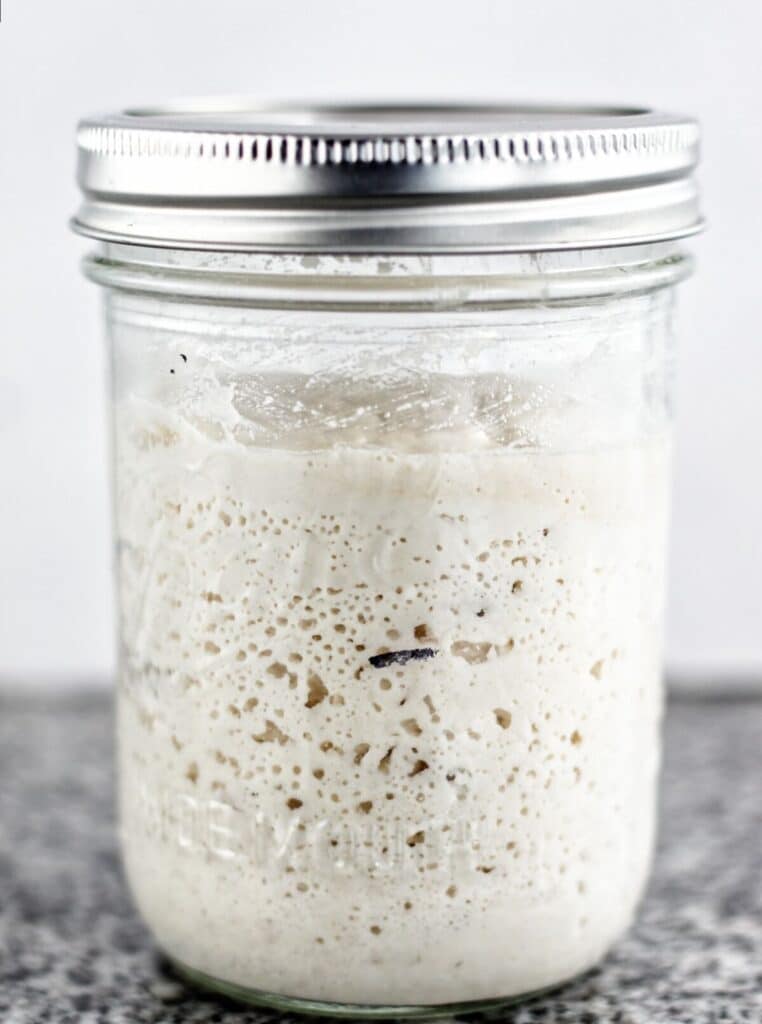
Some of the items linked in this post are affiliate links, meaning, at no additional cost to you, if you click through and make a purchase, I will earn a small commission.
I was always so scared to start a sourdough starter and make sourdough bread. The way it sounded to me was so confusing and way too much work. Like you had to have all conditions exactly right. No tap water. No metal utensils. A big enough jar to handle overflow and lots and lots of discarding and feeding. Every day. Sometimes twice a day. At least that’s what I thought originally, and some of those “rules” stuck with me when I made my first sourdough starter and bread (such as twice a day feedings and discardings).
But I often found myself forgetting to feed my starter and it’d eventually die. So when I found a different way for beginning and maintaining a sourdough starter, I was absolutely thrilled to test it out and see how it would work in the gluten free bread baking world. And that’s why I’m here now, telling you all about it, because it worked SO well that there was no way I was NOT gonna share it with you!
This method is not my own creation, so I need to give credit where credit is due. The brain child for this fabulous sourdough starter is the “Sourdough Whisperer” herself, Elaine Boddy. In her book (affiliate link), she explains that there is no need for keeping an overload of starter because it will almost grow into a beast, requiring to be fed all the time. If you keep a minimal amount of starter, you only need to feed it a minimal amount of flour and water, and not that often either. So I took her teachings and applied them to my own gluten free practices and here we are. You truly won’t believe how easy it is to maintain this starter (in the fridge!) and feed it only when you need it. Let’s dive right in!!
here's what you'll need
- A medium bowl
- A small jar for storing starter, preferably one with a wide lid
- Gluten free flour (NOT a blend). I’ll explain more on this later.
- Water
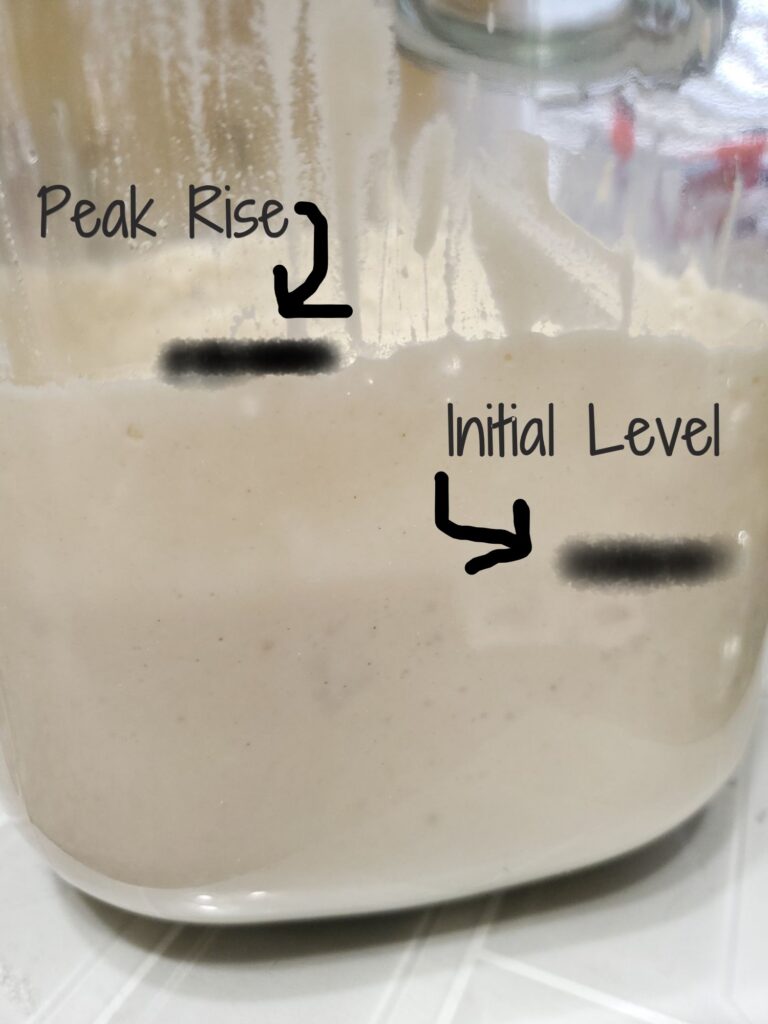
THE SIMPLE METHOD FOR creating your SOURDOUGH STARTER
Fun fact about me--I used to brew my own kombucha. I was good at it, too, and it was incredibly cheap to make! I used to make different wonderful flavors, like lavender lemon, tangerine, and chai just to name a few. This was when kombucha first came on the scene and no one really knew what it was. Now, you're probably wondering, "why in the heck is she telling me this?" "Who cares?" I actually DO have a relatable reason. It's the way I "got" the whole sourdough starter thing. Kombucha uses a SCOBY, which is a Symbiotic Culture of Bacteria and Yeast. It is required for the fermentation of kombucha, which is just sweet tea that's been fermented.
Sourdough starter is basically the same concept. It's simply a mixture of flour and water that grabs the wild yeast in the environment and flour to create a live fermented culture. Sourdough starter takes the place of store bought yeast in bread baking.
To make a gluten free version of a sourdough starter isn't really any different, other than the types of flours you use. And in my experimenting, I've found that there is a WIDE range of flours that can be used in making a gluten free sourdough starter. Of note, there won't be the same kind of stretch in this gluten free sourdough starter as there is in a regular (gluten/wheat) starter. In fact, sometimes the top of the starter looks like cracked leather a little bit, and in order to see the bubbles you may need to agitate the jar (or even stir it gently).
- In a medium bowl, add 50 grams of brown rice flour (or your gf flour of choice--see below) and 60 grams of water. Stir until well combined. It should look like a thick pancake batter. Cover loosely and leave on the counter for 24 hours. I use a paper plate to cover my bowl.
- The next day, feed the starter with 30 grams of your gf flour of choice and 40 grams of water. Cover loosely and leave for 24 hours.
- Continue this method until you get to day 5.
- On day 5, remove the cover and discard roughly half of the starter and feed again with 30 grams of your gf flour of choice and 40 grams of water.
- Day 6, do not discard anything and feed with 30 grams of your gf flour of choice and 40 grams of water.
- Day 7, discard half and then feed as per usual.
- Day 8, feed as per usual.
- Day 9, discard half and feed as per usual.
- Day 10, look for signs of plenty of bubbles, expansion of the starter, and a sour smell in the bowl. If you don't see these signs, continue with the status quo until you do see them. If you DO see these signs, you can now put it in a wide-mouthed jar (affiliate link) with a tight fitting lid and place it in the fridge, where it will stay until you’re ready to use it.
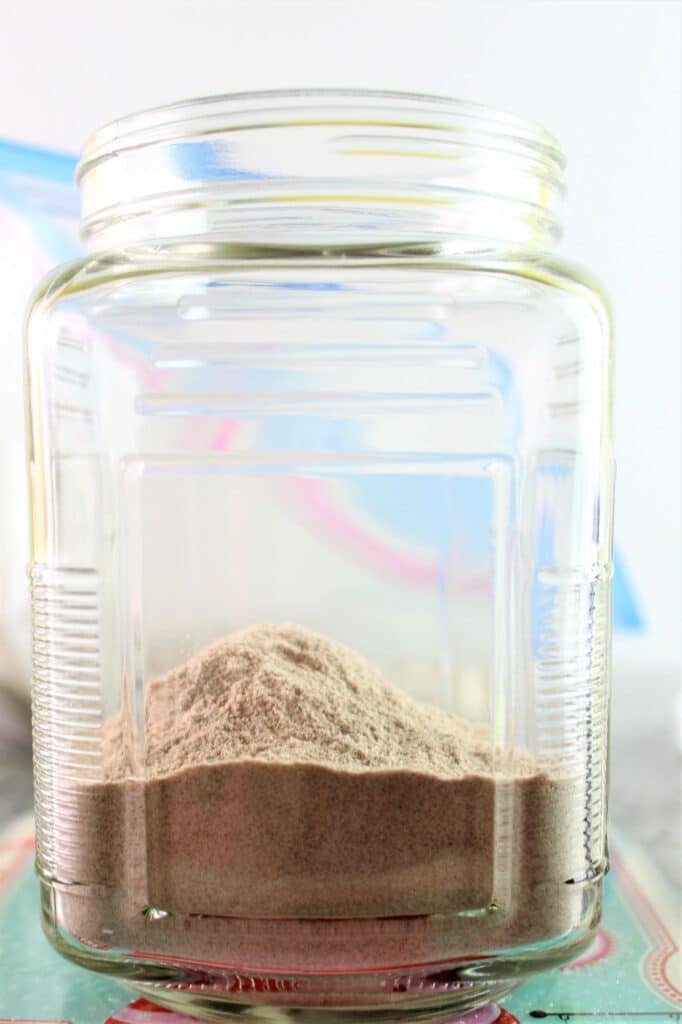

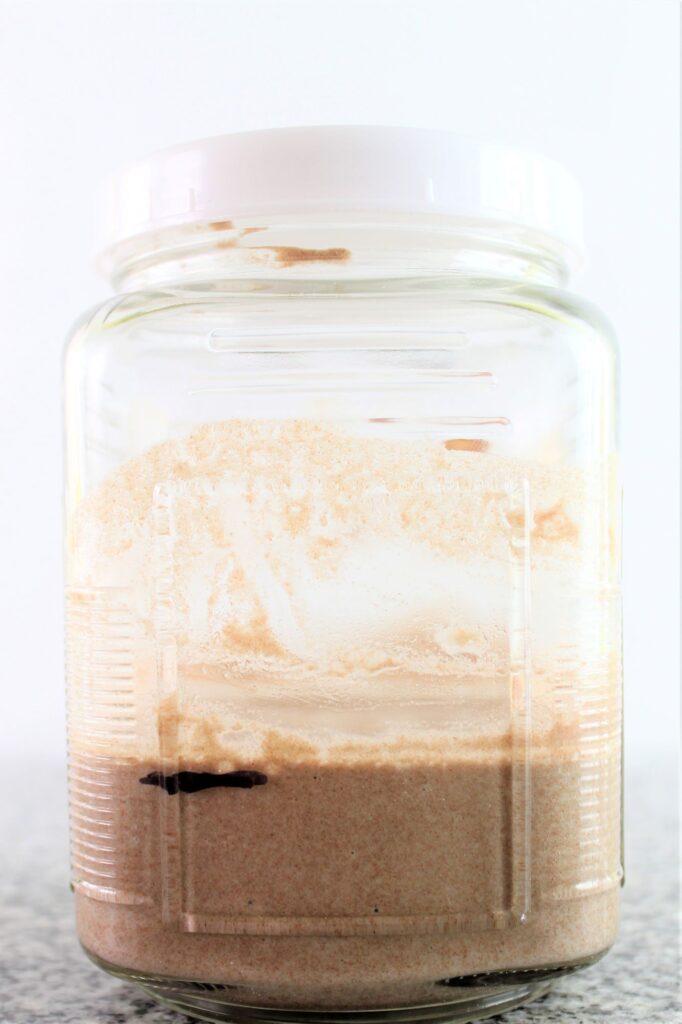

What Flours are Okay to Use?
From what I've researched about sourdough starters, the best flour type to begin with is a wholegrain variety. Here are some examples:
- Sorghum (affiliate link)
- Teff (affiliate link)
- Millet (affiliate link)
- Amaranth (affiliate link)
- Buckwheat (affiliate link)
- Brown rice (affiliate link)
You can also use a combination of any of the above to start your starter. I would NOT suggest using anything other than the above flours for the first few days, until you begin to see activity. Then, if you want, you can add half of the flour you started with and half white or sweet rice flour. The sweet rice flour offers a very slight stretch to the starter that you wouldn't normally have.
When I made my first starter, I used sorghum because I had a bag of it sitting in my freezer just waiting to be used. Then I ran out and needed to feed it with something else, so I used brown rice flour. Not too long ago I bought several bags of Bob's Red Mill wholegrain flours, almost every single one listed above. I stashed them in my freezer for a rainy day. So I've pretty much been experimenting with all kinds of wholegrain flours and teff flour was bubbling within 2 days!
SOURDOUGH STARTER FREQUENTLY ASKED QUESTIONS
No, you absolutely do not need to feed your starter daily! If you aren’t making bread on a daily basis, store the starter in the fridge until you’re ready to make bread again. Only feed it when you need it.
While most people state to use filtered water, my experience is that tap water works just fine. If you feel your tap water is heavy in chlorine, you can fill a container with tap water and leave it on the counter overnight. The chlorine will dissipate as the water sits.
Liquid on top of a sourdough starter is called “hooch.” It’s a byproduct of the fermentation process and indicates your starter is hungry. You can either stir it back into your starter when feeding or pour it out before feeding.
Tips, Tricks, and Rules to Break
- If you stir your starter with a metal spoon, it's not going to die. I know this because for the longest time I used a metal spoon and had the liveliest starter ever. The only reason I switched to a silicone spatula is because it was easier to scrape the sides of the container and I wanted it to look a little neater.
- Shocker--you can actually use tap water!! Again, I know this from experience. I've never used anything other than tap water. Maybe my tap water isn't filled with tons of chlorine, but I've never had a problem with it. If yours is, by all means use bottled or filtered water. Or pour your tap water into an open container and let it sit on the counter overnight.
- If you plan on baking gluten free sourdough often, just keep your starter on the counter and feed it at least once a day. If you don't plan on baking as often, you can store your starter in the refrigerator and feed it once a week.
What Size Jar Do I Need?
Elaine from Sourdough Whisperer recommends going with a smaller jar because you really don't need to keep large quantities of starter at any given time. I personally like these 16-oz wide-mouth jars (affiliate link), but use what you have. You don't need to go out and buy any jars, but especially not ginormous ones!
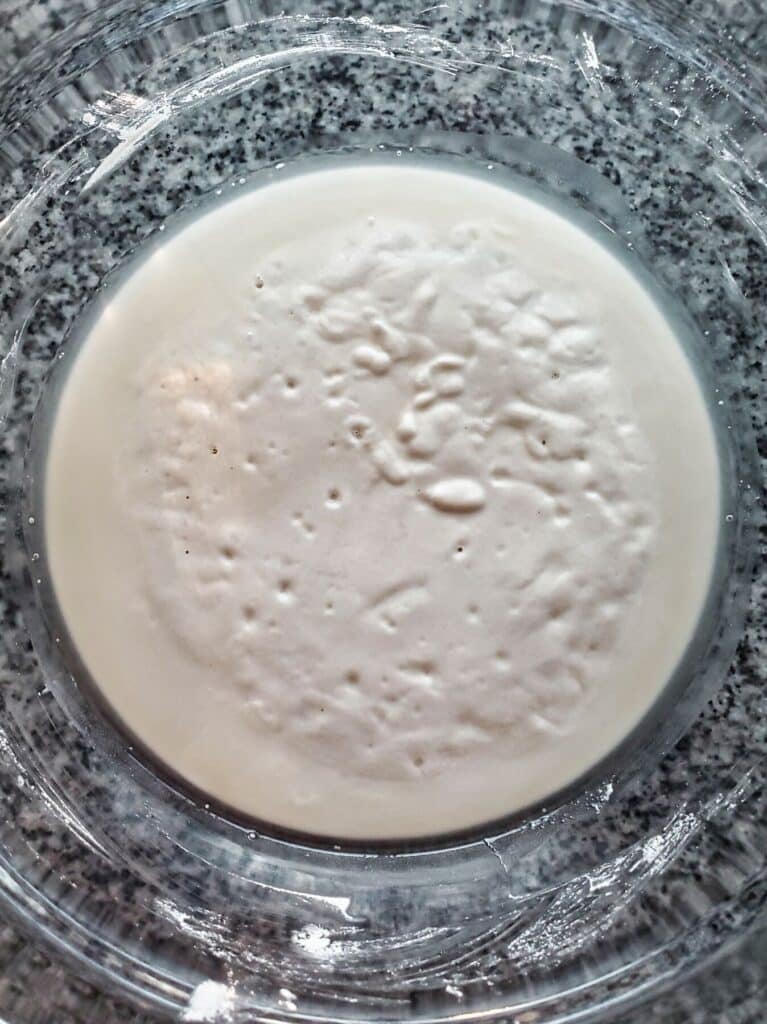
Don't be intimidated about making (capturing) your own natural yeast. It's so much easier than you might think and the rules CAN be broken. Start your gluten free sourdough starter today and by next week you should be ready to bake my gluten free sourdough bread!!
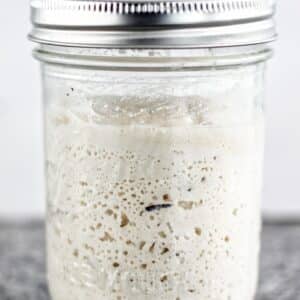
Gluten Free Sourdough Starter
Ingredients
- wholegrain flour, at least 290 grams (options: sorghum, buckwheat, brown rice, amaranth, teff, millet, quinoa
- water
Instructions
- Day 1--In a clean glass or ceramic bowl, add 50 grams of the wholegrain flour of your choice and 60 grams of water. Stir the mixture. If it's super thick and not like a thick pancake batter, you can add another 10 grams of water.
- Loosely cover the bowl (I like to use a paper plate) and leave it to sit on your counter for 24 hours.
- Day 2--Add 30 grams of wholegrain flour and 40 of water to what's already in the bowl and stir to combine.
- Loosely cover the bowl and leave it on your counter for 24 hours.
- Day 3 and 4--Continue with the previous day's feeding (30 grams of wholegrain flour and 40 grams of water) for both days. Loosely cover the bowl and leave it on your counter for 24 hours each day.
- Days 5--Remove the cover, discard roughly half the starter (no need to measure), and feed the starter as per usual (30 grams of flour and 40 grams of water). Loosely cover the bowl and leave it for 24 hours.
- Day 6--Remove the cover and feed with 30 grams of flour and 40 grams of water (do not discard). Cover loosely and leave for 24 hours.
- Day 7--Remove the cover, discard roughly half the starter, and feed with 30 grams of flour and 40 grams of water. Cover loosely and leave for 24 hours.
- Day 8--Remove the cover and feed with 30 grams of flour and 40 grams of water (no discard). Cover loosely and leave for 24 hours.
- Day 9--Remove the cover, discard half, and feed with 30 grams of flour and 40 grams of water. Cover loosely and leave for 24 hours.
- Day 10--By now, your starter should look very bubbly and have a sour aroma to it (in a good way). Spoon it into a wide-mouthed jar with a tight fitting lid and place the jar in the refrigerator until you're ready to bake with it.
Notes
Gluten Free Sourdough Starter was originally posted on June 9, 2020 and has been updated with an entirely new method for creating and maintaining the starter, as well as new pics and a video.



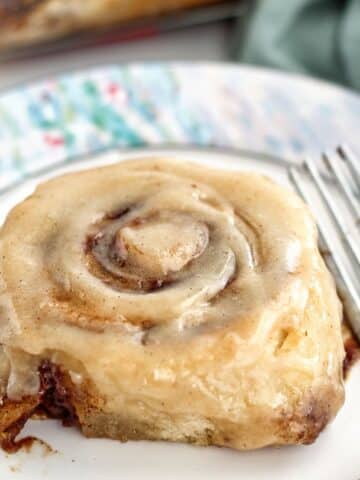

Linda
Hello. Why discard? I feel it's less of a waste to leave everything in there and use what I need when I'm ready to bake.
Kim
If you don't initially discard, you'll eventually have way more starter than your feedings can sustain, and your starter will be weaker. You can always start another starter with the discard.
Nataline Calia Brieck
Hi Kim, I'm so appreciative of this recipe. I have been making traditional sour dough (from wild starter) for years and recently had to face the fact that I am sensitive to gluten. I started your process using brown rice flour and I am on day 8 with no bubbles... my starter looks just like paste. Any suggestions?
Natalie Calia
Hi Kim,
I'm so appreciative of this recipe. I typically make "regular" sour dough for my hubby but I'm gluten free and so I'm familiar with the process of creating a wild yeast starter. I started your process using exclusively brown rice flour and I'm on day 8 and my product just looks like paste... no bubbles. Curious how I can get it to bubble? Wondering if I need more water? Any suggestions? Thanks in advance.
Agata
Hi Kim, thank you for this recipe! I'm using brown rice flour and I'm on day 5. It's bubbling very nicely and I'm hopeful. I have a question: is the discard from day 5 good for anything? I hate to throw it away.
Thank you!
Helen
Hi Judy, I am on day 7 of making the sour dough starter, it's my first attempt with gluten free organic Teff flour and so far it seems to be going well.
It's chilly on my kitchen worktop here in the UK but that doesn't seem to have held my starter back.
Today my kitchen has a slight sour sweet aroma.
Jen Bickford
How soy you maintain this recipe do you discard half and feed weekly when storing in the fridge?
Kim
Nope. There is no need. Once it is established, put it in the fridge until you're ready to use it. When ready, take it out of the fridge and feed it and use the amount needed in your recipe. You should always have a little leftover in your jar when using, which you can just put back in the fridge until the next time.